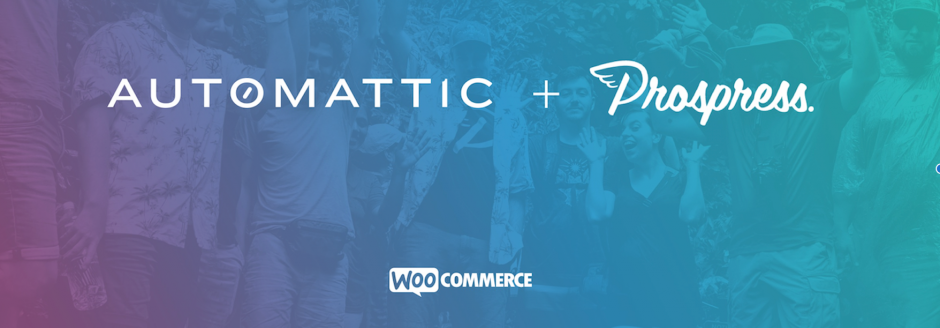Fashion With a Cause: Interview With Causegear
Today we have an interview with another WooCommerce business that’s trying to make a difference in the world, this time in the field of human justice fashion.
Causegear employs crafters in India that get paid dignified wages to make high-quality bags, backpacks, purses and the like, which are then sold through Causegear’s website. The crafters’ stories are one of the most important parts of Causegear’s brand.
Brad Jeffery is the President-CEO-Servant of Causegear, and he was kind enough to sit down with me for a telephone interview to tell me more about Causegear, the crafters and human justice fashion.
Starting Causegear
Inspiration
Brad says he was inspired to start Causegear when he saw the realities of extreme poverty firsthand. He was visiting Nairobi, Kenya and visited a slum, where he said he was moved to do something about the inhumane conditions and injustice he witnessed.
The Kenya trip coincided with a period during which Brad had been researching fashion businesses and supply chains, another area where he says he felt moved to action:
I had been researching the fashion world, and learning that most of our fashion and more and more unfortunately, is being made by slaves or very inhumane jobs. So that really bothered me and I wanted to do something about it.
Brad brought these two concerns together and started Causegear, deciding to make India the country of focus.
Social Business Rather Than Charity
When I asked Brad why he decided to create Causegear as a business, rather than as a charity, he explained:
I wanted to create an example, for the for-profit business world, that you can actually have a cause-based, compassion business and still increase social change. And you can give a lot—you can contribute a lot to changing the world—and still make enough profit, a viable profit.
Because Brad and the rest of the Causegear team are trying to help people become self-reliant, they figured they should set an example by creating a sustainable business themselves.
Causegear operates as a new type of entity, called an L3C, which is a low profit, limited liability company. This means Causegear puts their mission first, and give 90% of their profits back to the people they serve.
The Nitty Gritty
Finding Partners
In order to find the crafters that Causegear employs to create their products, they have partnered with an Indian organisation called Cross Stitch.
Brad says they ended up choosing Cross Stitch, out of a group of nine different organisations, because their missions aligned:
Their mission is to rescue people out of poverty and slavery, and provide them with jobs. So it fit really well with us, because we needed an organisation to help us find the right people to serve. They become a clearinghouse, essentially, to select the candidates who are the candidate crafters.
Designing the Product
If you check out the Causegear website, you’ll see that the bags and other products they have on offer are stylish and high quality (all come with a lifetime guarantee to be free from defects in materials and workmanship).
Brad understands the importance of offering a product that meets the various demands of the market:
You have to be competitive in the marketplace. Your cause can’t be the leading value, the product has to lead and then the cause has to follow. Because consumers are driven by the product. It’s a very emotional purchase. They want to buy something that they really like, that they really enjoy, they’re not going to sacrifice that for the purpose of the product.
So when designing the Causegear bags, Brad says they take into account a number of factors, including:
- current market trends;
- what the main brands are showing and selling;
- the right price point.
Brad says that based on this research, Causegear begins designing their own variations of products, through sketches, photos and prototyping. He explains the iterative sample process:
Making a sample, trying it out, making an adjustment, trying it out, going back and forth a few times to kind of get it right. It’s a lot of trial and error.
Facing Challenges
I asked Brad to tell me about the biggest challenge they’ve faced so far. He listed two: instilling quality standards; and creating aware customers.
Challenge #1: Instilling Quality Standards
The first challenge was helping the crafters understand the level of quality Causegear requires.
He explains the causes of the quality challenge as follows:
So when you rescue people out of poverty, they’re not used to being able to think for themselves. So it’s helping our crafters have dignity and believing in themselves. And the confidence that they can do it. And training them.
Brad says that Causegear has largely overcome this challenge today.
Challenge #2: Creating Aware Customers
The second challenge Causegear faces is creating awareness of their cause to create customers. Brad says a lot of people still don’t understand the realities of how their clothes are made.
It’s a disruptive thought, you know? To think that the shirt that you’re wearing, or the jeans that you’re wearing, are potentially made.. are supporting slavery.
So Brad thinks their biggest challenge right now is getting people to understand that and change their buying behaviour.
Now that we’re maturing as a company, we’ve got quality products now, our crafters are doing a great job, but now it’s awareness building.
Why WooCommerce?
Brad sees many benefits of using the WordPress/WooCommerce combination for social businesses like Causegear:
Yeah, I think it really has helped startups, create a professional quality web experience at a very low cost. It has a lot of flexibility, a lot of options, so it enabled us to get our mission on the web. And communicate effectively. And that’s what it’s all about, you know? We’re a web-based business, so it’s all about the website, right?
When I asked Brad what he thinks has been the biggest advantage of running Causegear as an eCommerce business, he replied:
Gosh, there’s so many things.
But the biggest, in his view, is that you can to communicate with the world about something you’re very passionate about.
You can be in the game with the biggest companies, you know. You can be considered alongside everybody else, and you can get your store, your message, your idea communicated to the world. For me personally, this whole topic of slavery and justice and fashion would be really difficult to communicate with a conventional channel. You know, if you just had a regular bricks-and-mortar store, man, that’d be really tough to get the word out.
Hopes for the Future
Scale Causegear
Brad is hoping to scale Causegear in the future. He’d like to offer more products, more product variety, to increase brand awareness and highlight the life of the crafter even more than they do now. For example:
Our face tag, our large face tag on our product, is a really strong asset and we need to leverage and capitalise on that more. And really build awareness through social media and a strong advocacy program. From the advocacy side—college campuses, corporations and organisations.
Human Justice Fashion Becomes the Norm
He also hopes to see more and more social businesses adopting the Causegear model.
There’s a few people doing what we’re doing, and they’re doing a good job. I’m excited to see that other people care about injustice in the fashion world.
Ultimately Brad would like to see human justice fashion become the norm:
I think though, it’s [human justice fashion] so small, and my dream, my hope is that this would be the norm, rather than the exception. That human justice fashion, that doesn’t hurt people that actually helps provide life changing jobs or quality of work, would be the norm. And that the buying public would make this a priority when they purchase clothing or fashion.
Brad urges us to think about the clothes we buy, even if just a little bit:
If just 25% of Americans would shift $35 in their fashion spending over a one year period, a million lives would be transformed.
Causegear Holiday Giving?
Speaking of spending, I asked Brad when people would have to order if they wanted to get one of their Causegear bags (or purses, or belts!) in time for Christmas.
He said if you are based in the U.S. and get your order in by December 17th, Causegear will guarantee that you’ll receive it in time for Christmas.
It’s great to see another example of a successful business making meaningful change in the world using WooCommerce.




